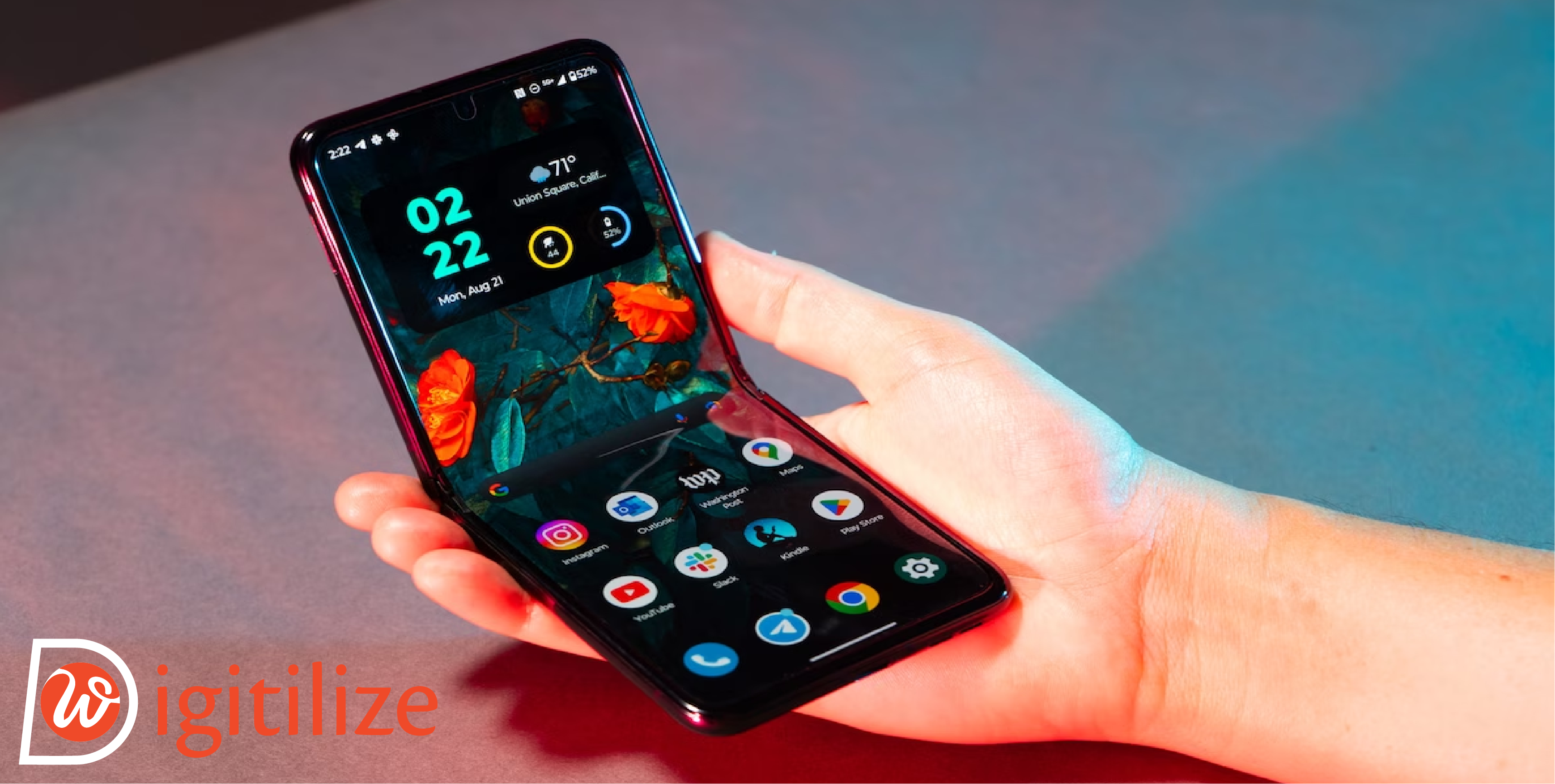How Folded Phones are Reshaping App Development in 2024

The flip-phone era once defined peak mobile design. Now, that golden age is making a stylish comeback—only smarter. When Samsung launched its Galaxy foldable phones in 2019, the tech world was stunned. But these devices didn’t just push hardware forward. They also kicked off a major shift in how we build mobile apps.
Foldable phones have changed the rules. App developers must now rethink design, user experience, and performance. In the UK, the rise of foldable devices is shaping a new app development approach that blends creativity with function.
If you’re looking to build apps for foldable phones, this blog will guide you. We’ll explore how to adapt to the foldable phone ecosystem and what adjustments you need to make for smooth, responsive, and future-ready app solutions.
Understand the evolution of folded phones.
 The idea of folding phones first surfaced in the early 2000s, when many tech companies released prototypes and conceptual designs. But folding screen smartphones and app optimization in the UK weren’t actually available for purchase in the consumer market until recently.
In the late 2000s and early 2010s, businesses such as Samsung, LG, and Motorola experimented with foldable phone designs. While these prototypes demonstrated the promise of hinge mechanics and flexible screens, they were severely limited in terms of technology.
The idea of folding phones first surfaced in the early 2000s, when many tech companies released prototypes and conceptual designs. But folding screen smartphones and app optimization in the UK weren’t actually available for purchase in the consumer market until recently.
In the late 2000s and early 2010s, businesses such as Samsung, LG, and Motorola experimented with foldable phone designs. While these prototypes demonstrated the promise of hinge mechanics and flexible screens, they were severely limited in terms of technology.
-
Technological Advancements
The advent of robust hinge mechanisms and sophisticated flexible OLED screens paved the way for the creation of useful foldable device application compatibility in the UK. A major turning point in the commercialization of foldable phone technology was reached in 2019 with Samsung’s Galaxy Fold presentation.
Later versions of foldable phones, such as the Motorola Razr and Samsung Galaxy Z Fold series, demonstrated improvements in terms of usefulness, durability, and design. Initial worries about hinge dependability and screen durability were allayed by these enhancements.
Advantages and Challenges of Foldable Phones
By smoothly switching between smartphone and tablet modes, foldable devices provide a flexible user experience. These gadgets give users the advantage of bigger screens for gaming, productivity activities, and entertainment consumption because of their flexible displays.
The mobility of foldable phones is one of their main benefits. These gadgets fold up small enough to slip into purses or pockets with ease. This keeps consumers’ convenience intact while enabling them to carry a bigger display.
-
Invention and Future-Readiness
Purchasing a foldable phones app development UK 2024 signifies a commitment to innovative technologies. Being at the vanguard of innovation may be advantageous for early adopters since these gadgets are indicative of the direction that mobile technology is taking.
Challenges of folded phones
Foldable phones have complex and delicate folding mechanics by design. This may raise questions about how long-lasting and resilient they are. Compared to conventional smartphones, foldable screens still carry a greater risk of breakage, despite manufacturers’ notable improvements in their resilience.
-
Limited Software and App Optimisation
Since the ecosystem surrounding foldable smartphones is still developing, certain software and applications could not be completely tailored for the unusual form factor. Uneven user experiences might arise from certain programmes’ failure to fully utilise the bigger displays.
How Folded Phones Are Reshaping App Development In 2024

The way we build mobile apps is changing fast as foldable smartphones grow in popularity. Developing apps for a single-screen phone is very different from designing for foldable devices with multiple screens or flexible sizes.
In the UK, app developers now face new challenges. Foldable devices allow for multi-window use, split screens, and unusual aspect ratios. This means designers and developers must think differently. Standard layouts may no longer work. Smooth transitions, responsive design, and adaptive layouts are key.
As foldable tech evolves, some app categories are being impacted more than others. Here are a few app types to consider when looking at how foldable devices are shaping app development in the UK:
-
Excellence Takes precedence over all else.
Foldable phones may come in different sizes, shapes, and aspect ratios—but user expectations won’t change. People still want smooth, bug-free apps that work perfectly, no matter how the screen folds.
This puts extra pressure on developers. You need to build apps that adjust to multiple screen modes without losing performance or quality. In 2025, app development for foldable devices means going beyond basic functionality. You must deliver polished, high-quality digital products that users can trust—just like they always have.
-
Extended Cost and Development Time for Apps
The longer time and cost estimates for app development are significant factors that will also affect the mobile app development economy. It will take a lot of design, programming, and testing work to optimise apps for foldable so they function flawlessly in all the modes, which will increase the cost.
-
Comments Have a Crucial Role
A prolonged feedback-gathering procedure is one of the effects of developing apps for foldable phones. There will be a lot of input given to you because you are bringing a traditional application into a new setting, particularly about the transition.
Things to Think About When Creating Foldable Phone Apps
More screen real estate for foldable phones means that developers will need to provide customers with a better user experience, more screen real estate, and app continuity while swiping between displays. Let’s look at a few considerations for creating apps for foldable smartphones.
There are two ways to find the foldable phone: open and foldable. When creating apps for these phones, designers must take into account both states. Designers must retain key UI and UX features inside the thumb and other finger sections because the unfolded state will free up more space on the screen. Users will have an incredible viewing experience on larger displays, thus designers must expand their creative horizons.
When creating apps for foldable phones, the screen ratio might play a significant role. The form factor of foldable phones ranges from a 1:1 ratio to an extremely tall, thin screen. To test the greatest and lowest ratios the app can tolerate, developers can experiment with the max aspect ratio and min aspect ratio.
Allowing the user to continue with their app or screen activity when switching between the two states is the primary problem for a foldable phone. Transitions must occur with little to no lag or disruption. Developers need to concentrate on the application’s dynamic scaling. Resizeable activity=true can be maintained in the code to do this. It indicates that the platform does not allow multi-window if you set resizeable activity=false. The application must pick up where it left off, in the same place and condition. On every platform, dynamic resizing will lead to more flexibility.
Foldable phones, as we’ve seen, let us transfer material between apps and run many apps simultaneously. Drag and drop within applications is an additional feature that developers may take into account. All apps used to pause in Android 9.0 and prior versions, leaving only one in active mode. When the device is in the multi-window mode in Android 10.0, all of the activities stay resumed. We refer to this as a multi-resume.
Top Features to Consider While Creating Apps for Foldable Devices
 There are options for bigger panels, more practical interactions, richer and more engaging user experiences, multitasking with numerous windows, less power-hungry displays, and more. Let’s examine in more detail some of the key components of mobile apps for foldable smartphones.
It should be perfect to begin developing mobile apps that work on both large and small displays. Application testing for foldable devices must take the resizability factor into account. Mobile app designs and interfaces have to precisely match the features and fold of smartphones. Furthermore, while utilising foldable devices, phones should remain consistent in terms of size and form.
There are options for bigger panels, more practical interactions, richer and more engaging user experiences, multitasking with numerous windows, less power-hungry displays, and more. Let’s examine in more detail some of the key components of mobile apps for foldable smartphones.
It should be perfect to begin developing mobile apps that work on both large and small displays. Application testing for foldable devices must take the resizability factor into account. Mobile app designs and interfaces have to precisely match the features and fold of smartphones. Furthermore, while utilising foldable devices, phones should remain consistent in terms of size and form.
-
Ability to Open Multiple Windows
Foldable smartphones let users run multiple apps at once on the same screen. That’s why developers should build multi-window apps for these devices.
Testing for multi-window compatibility is essential. Your app must work smoothly when users open it alongside others. People expect to multitask easily—watch a video, chat, and browse at the same time. A good foldable app supports this. It adapts quickly and delivers a fluid, seamless experience across multiple windows and displays.
When creating mobile apps, developers should constantly take multi-screen compatibility into account. It should be easy for app developers to go back to either size, text, or configuration. They can select between primary and secondary screens.
Another crucial component that mobile apps for foldable devices must have is multi-resume. The split display improves the app’s efficiency, but at the expense of accessibility and usefulness. However, if you properly test your mobile app for foldable devices, it will work wonderfully in multi-window mode.
The bulk of phones in this market sector are Android-powered, and Apple has not yet entered it. Aspect ratio issues arise during android mobile app development. Numerous mobile devices exist, each with a different screen size. When testing apps for foldable devices, multiple aspect ratios should be set for various devices. The quality of mobile apps must, above all, not degrade when used in multi-window mode.
Advantages of Folded Phone App Development
Because of the many intricate problems associated with this emerging technology, creating an app for foldable devices can be difficult. Nonetheless, it has a number of advantages. Let’s examine some of the modifications and advantages that foldable device apps provide to app developers as well as their users:
Creating apps for foldable devices offers several benefits, chief among them being the ability to utilise a larger screen area. The main goal of the apps made for these sorts of devices is to provide users with more screen real estate so they can interact with the apps. When a foldable device application is strong, you have produces software without limits.
Apps for foldable devices also benefit from flexible screen sizes. This feature works like an expansion mode, making apps more useful and dynamic.
Users can expand or shrink apps based on how they use their devices. The software adjusts automatically, offering different functions on one screen. This gives users more control and a better experience. With one foldable device, people can run apps in compact or full-screen mode, depending on what they need. This flexibility is changing how we think about app functionality in 2025.
-
Gain Access to Additional Features
Due to their fixed screen sizes, modern smartphones can only execute fixed programmes at a set screen resolution. In light of this, contemporary developers need to design mobile apps with a fixed screen size in mind. However, software developers now have the chance to include more functionality in their applications because of the advancement of foldable gadget technology.
The added benefit of having more inside room for hardware components like larger (or dual) batteries and more potent CPUs is provided by foldable phones. The power needs of larger displays are higher, however, continual developments are being made to fulfil these power requirements.
Business owners may reach a new consumer base by using software for foldable smartphones and app design trends in the UK. It targets consumers who like using their foldable smartphones for different tasks and who want more from their gadgets.
The Future of Android App Development and Foldable Devices

Foldable smartphones have opened up a new era of mobile innovation. These devices go beyond standard screen sizes to offer fresh ways to use apps. Users can now enjoy features that weren’t possible with traditional flat screens. As a result, app development is evolving fast.
In the UK, the future of app development for foldable devices looks exciting. Developers are exploring new ideas and user experiences. Today, only seven foldable screen formats support flexible aspect ratios. But that’s just the beginning. As device makers push the limits of design, we’ll see phones that fold in more creative ways, sideways, vertically, or even around the wrist.
Apps will need to adapt to these changes. Developers must create interfaces that shift smoothly between screen modes, folded, unfolded, or partially open. This will redefine how users interact with everyday apps like messaging, shopping, gaming, or navigation.
Foldable technology is still growing. While not yet mainstream, it’s gaining popularity. More brands are entering the foldable market, which will likely drive prices down. As phones become more affordable, adoption will rise, and with it, the demand for innovative app experiences.
We advise you to seek the assistance of a technical adviser and a professional development team in order to capitalise on the latest technological advancements in this area. A progressive mobile app development agency in UK, DigitilizeWeb recognises the need to develop applications that are fully functioning across all platforms, including foldable phones. For more follow us on Facebook.
Frequently Asked Questions
Foldable phones are reshaping app development by requiring developers to consider factors such as screen design, display ratio, application continuity, and support for multiple windows to optimize apps for foldable devices.
Important considerations include designing for both folded and unfolded states, accommodating various aspect ratios, ensuring application continuity, and supporting multiple windows for multitasking.
Top features include personalization for different display sizes, support for multiple windows and displays, multi-resume functionality, and aspect ratio optimization for various devices.
Foldable phones drive innovation in Android app development by offering developers opportunities to create versatile, feature-rich apps optimized for diverse screen configurations and user preferences.
The future of Android app development and foldable devices holds promise for new designs, functionalities, and applications. As foldable technologies evolve and become more common, developers will continue to innovate to meet user demands.
Businesses can capitalize on the trend of foldable devices by partnering with technical advisors and professional development teams to create fully functioning applications that cater to the unique capabilities of foldable phones, thereby reaching new consumer bases and staying ahead in the competitive market.
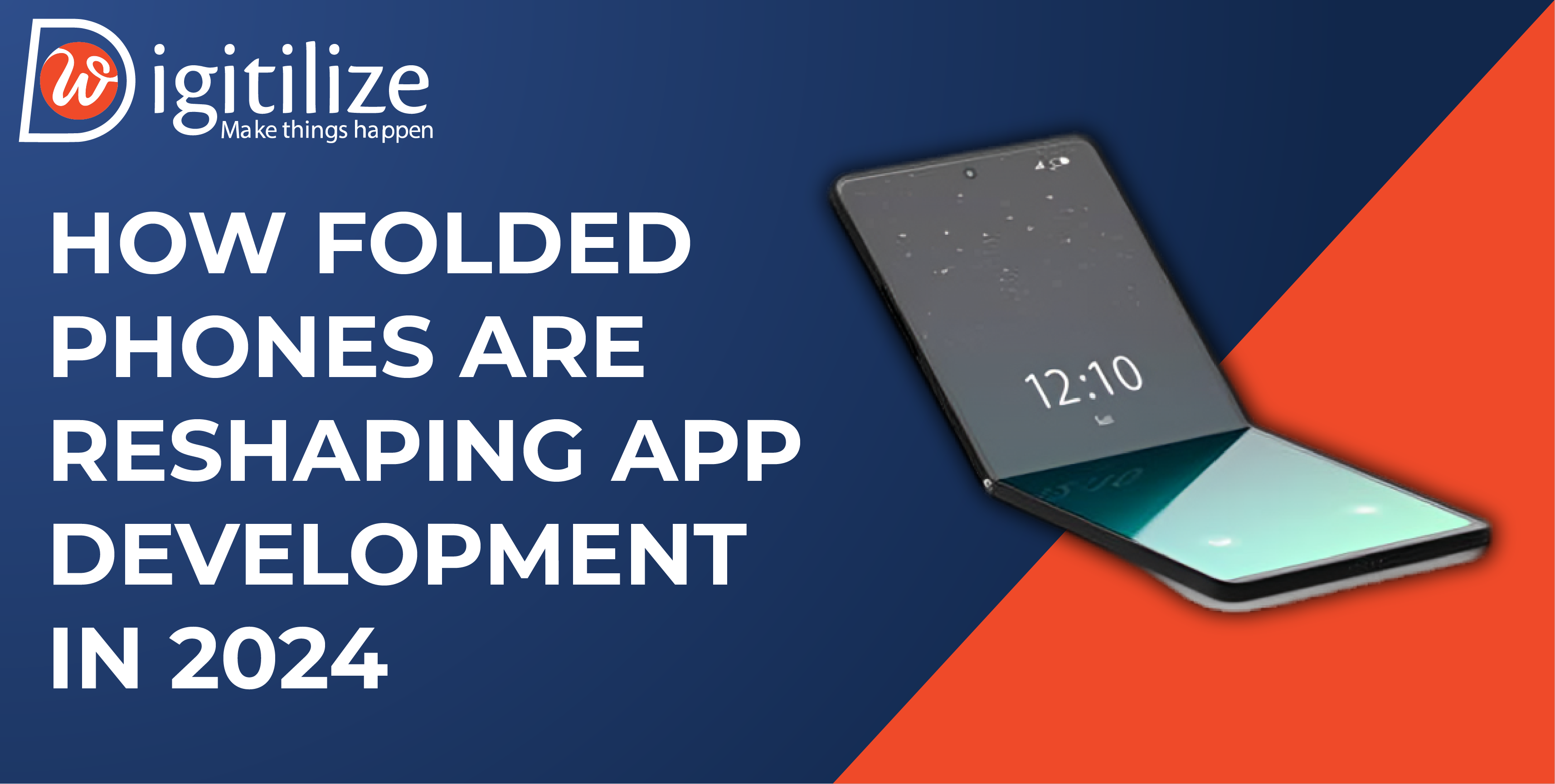
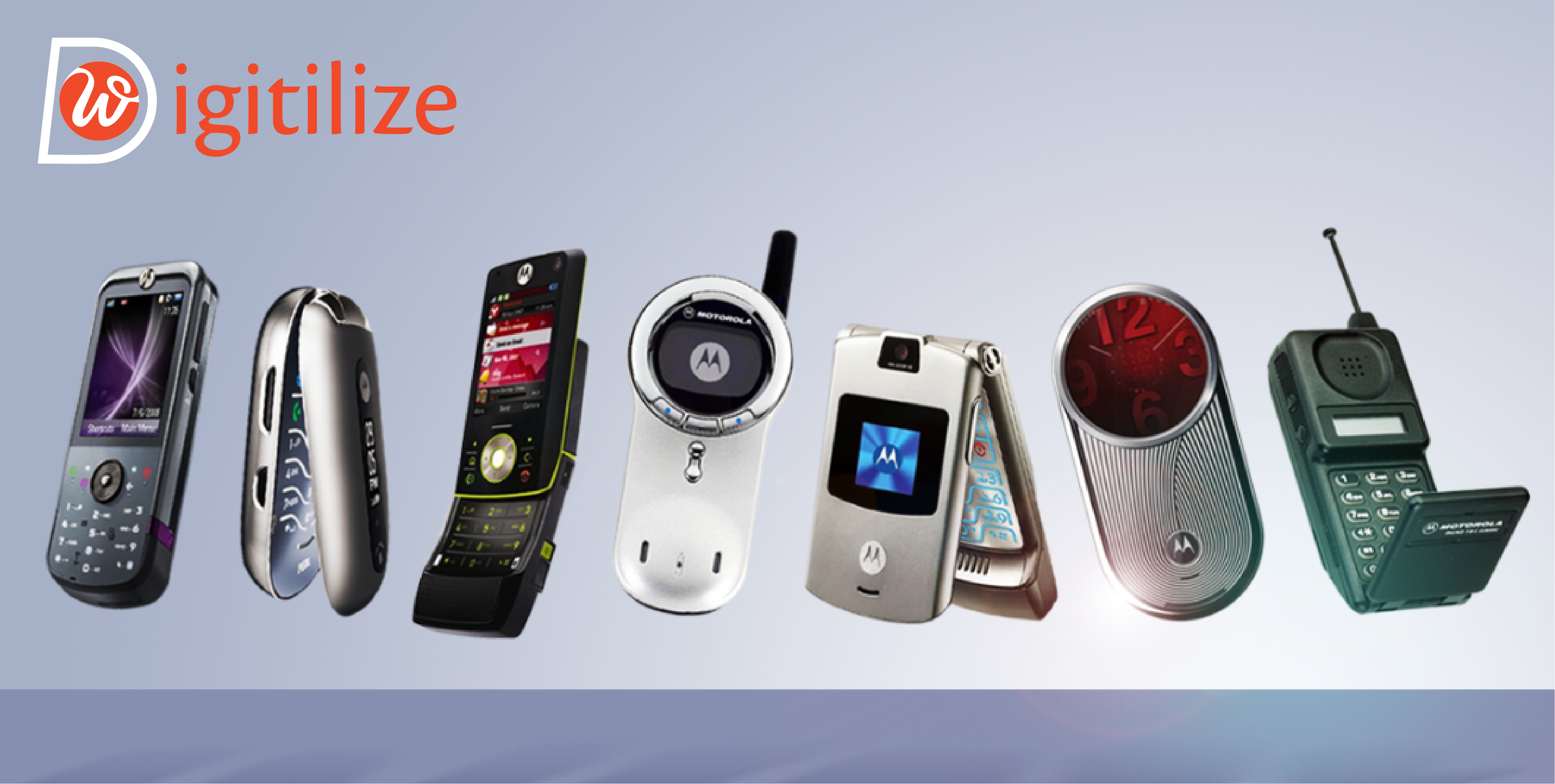 The idea of folding phones first surfaced in the early 2000s, when many tech companies released prototypes and conceptual designs. But folding screen smartphones and app optimization in the UK weren’t actually available for purchase in the consumer market until recently.
The idea of folding phones first surfaced in the early 2000s, when many tech companies released prototypes and conceptual designs. But folding screen smartphones and app optimization in the UK weren’t actually available for purchase in the consumer market until recently.
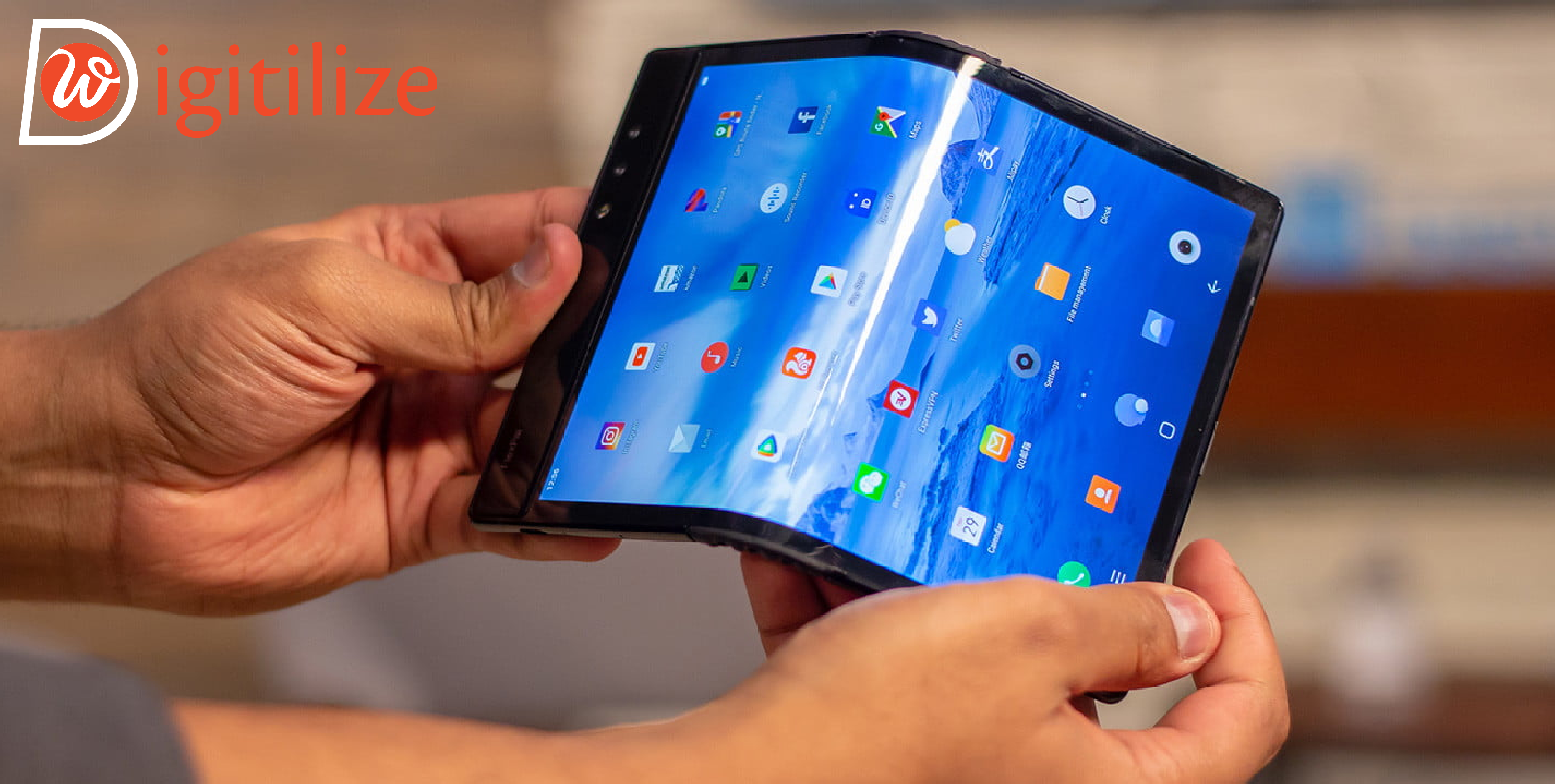
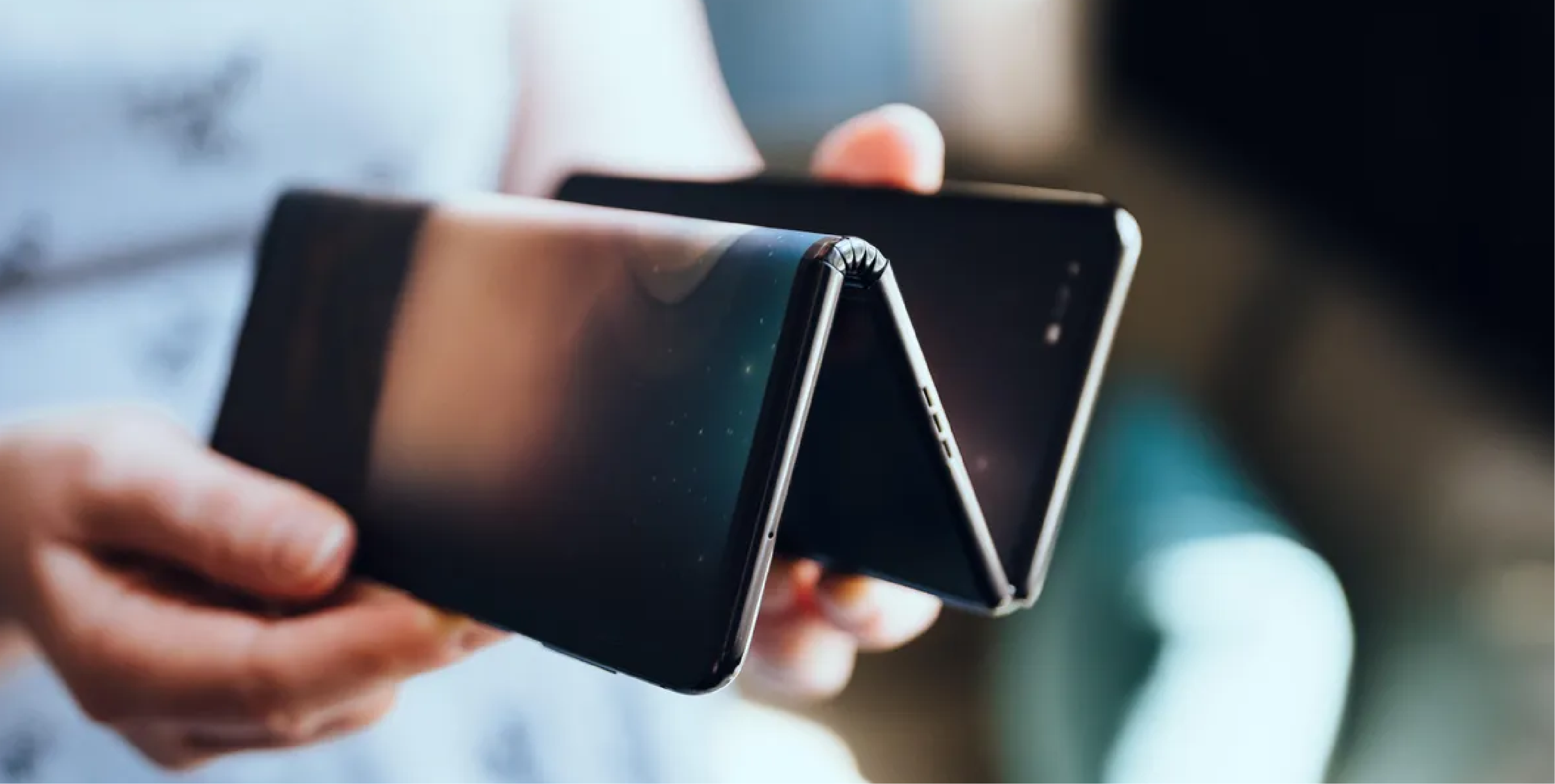 There are options for bigger panels, more practical interactions, richer and more engaging user experiences, multitasking with numerous windows, less power-hungry displays, and more. Let’s examine in more detail some of the key components of mobile apps for foldable smartphones.
There are options for bigger panels, more practical interactions, richer and more engaging user experiences, multitasking with numerous windows, less power-hungry displays, and more. Let’s examine in more detail some of the key components of mobile apps for foldable smartphones.
